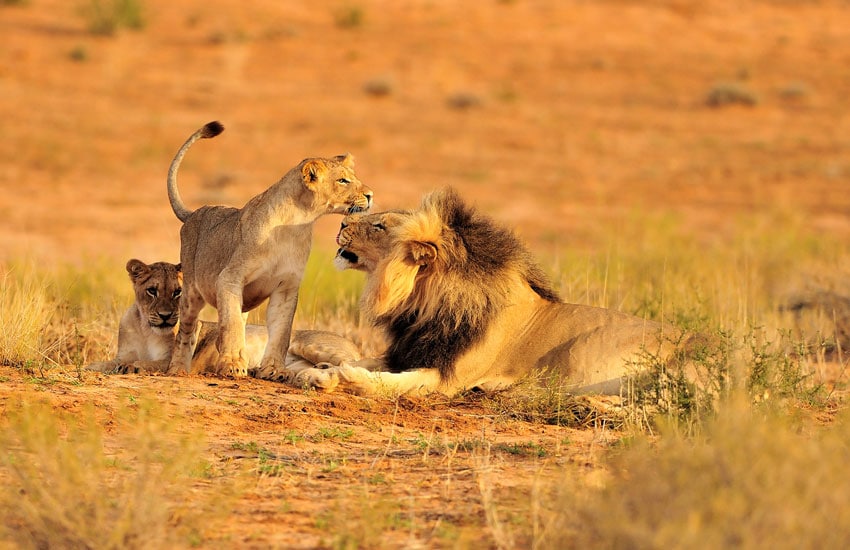Ruaha National Park
Rhuha National Park, Situated in the center of Tanzania, Ruaha is the alternative park on the Southern circuit. Ruaha’s relative inaccessibility results un far fewer tourists compared to Nyerere National Park (previously The Selous) and any similar park in the Northern circuit. The benefits of traveling this distance include a rugged terrain adorned with baobab-dotted hills and rocky escarpments, alongside remarkable wildlife; Ruaha safaris consistently feature thrilling predator densities, housing 10% of the global lion population, one of four cheetah populations in East Africa, and the third largest wild dog population worldwide. This is accompanied by substantial herds of elephants and buffalo, as well as a migration of wildlife from Southern and Eastern Africa.
Ruaha, Tanzania’s largest National Park, is wilder and more distant than its southern counterpart, Nyerere National Park (The Selous Game Reserve), and ultimately boasts superior species, however it lacks boating safaris. We adore this park! Safaris in this region are among the finest in the country and offer exceptional value for money. It is a pristine and genuine ecosystem that remains largely unspoiled.

Ruaha, one of Tanzania’s most well-preserved and economical secrets, serves as an excellent complement and contrast to Nyerere, making it a valuable addition to any Tanzanian safari. Observing lions in the Mwagusi region is particularly gratifying, and the overall density of predators across the park surpasses that of many other parks in the country. It is an exceptional safari spot.
What is the location of Ruaha National Park in Tanzania?
Ruaha is a vast and untamed park located to the west of Nyerere (Selous Game Reserve) and south of the Serengeti. This resort boasts remarkable biodiversity; nonetheless, its geographical location results in longer and more expensive flights, thereby limiting visitor numbers and contributing to its authentic and uncommercial atmosphere. An almost-daily flight links the Serengeti and Ruaha, with additional flights available from Dar es Salaam and Nyerere.
Ruaha National Park – The Game
Ruaha features a comprehensive display of predators, including notable populations of lions, leopards, cheetahs, wild dogs, and hyenas. Buffalo and elephant herds inhabit the park, but it is the area’s remarkable amalgamation of species from East and Southern Africa that captivates wildlife and birding aficionados. Sable antelope, Grant’s gazelle, greater kudu, and lesser kudu are frequently observed with East Africa’s prevalent species, including zebra, defassa waterbuck, impala, and giraffe. Dedicate time and traverse the park to discover sable, roan, hartebeest, and over 500 avian species!
Ruaha Safari – The Activities Offered
The primary activity is a midday game drive in Ruaha Safari. Nighttime safaris are prohibited. Owing of the substantial elephant population in Ruaha, certain camps have opted not to conduct walking safaris. Establishments like as Ikuka, Jongomero, and Kigelia provide exceptional guides and offer remarkable walking safaris; nonetheless, Kichaka is the premier destination for an emphasis on walking safaris. Jongomero is the exclusive camp that conducts fly camping excursions, offering thrilling nights beneath the stars.
Ruaha Safari – Ideal Time
Similar to Nyerere (The Selous), Ruaha is a quintessential dry season park. The quality of wildlife observation improves as the dry season progresses, as diminishing water sources lead to increased animal concentration around remaining waterholes and rivers. Visiting Ruaha during the off-season can almost ensure solitude during your safari, and there are areas inside the park where wildlife populations remain favorable year-round. The avian observation from December to March is remarkable.
Best Time to Visit Ruaha Safari | Ideal Timing for Ruaha
When traveling to Tanzania, the primary objectives are likely to be a safari, a beach experience, or both. The optimal period for a safari in Tanzania is during the dry season from July to October, characterized by arid and sunny weather. As the parks desiccate, the vegetation becomes sparser, facilitating the visibility of animals, who are compelled to gather around the dwindling water sources. Short rains occur in November, occasionally extending into December, January, and March, preceding the long rains that arrive in April and May. Nonetheless, this does not imply that December, January, and February are not still exceptional periods to visit Tanzania.
In terms of temperature Ruaha consistently experiences temperatures in the late 20s to early 30s Celsius year-round, with nighttime lows seldom descending below 14 degrees Celsius during Tanzania’s winter in July. In Ruaha, the distinction between the short and long rains is rather less pronounced than in other regions of Tanzania. Precipitation commences in December, approximately on the 19th, and persists until April, thereafter diminishing at some point in May. The campgrounds are closed in May; therefore, it is advisable to avoid this month for visits. This month will remain exceedingly wet, posing challenges to accessibility.
Nevertheless, from June to the conclusion of October, there is virtually no precipitation. Ruaha is a highly seasonal park for wildlife; during the wetter months, the vegetation can become dense, making wildlife observation more challenging compared to the flat Serengeti plains. For optimal game watching possibilities and exceptional value, consider September and October for outstanding complimentary night offers at our preferred Ruaha lodges. Notably, the precipitation is most intense in December and January, contrary to the traditionally rainy months of April and May, which may influence your decision regarding a Christmas vacation. Nevertheless, numerous clients have observed a variety of unique and remarkable species in February. Like any safari, success is contingent upon the day’s fortune.
